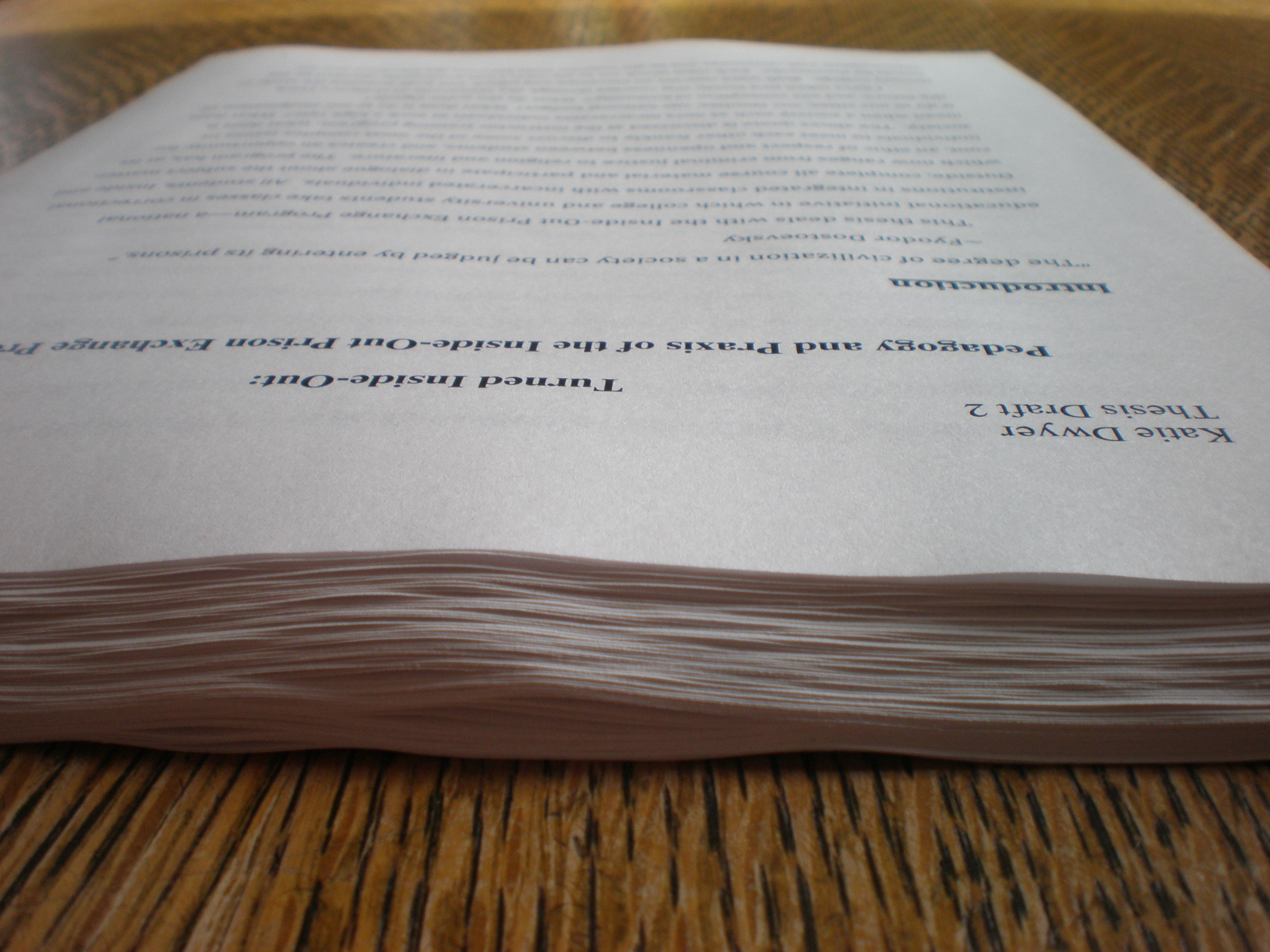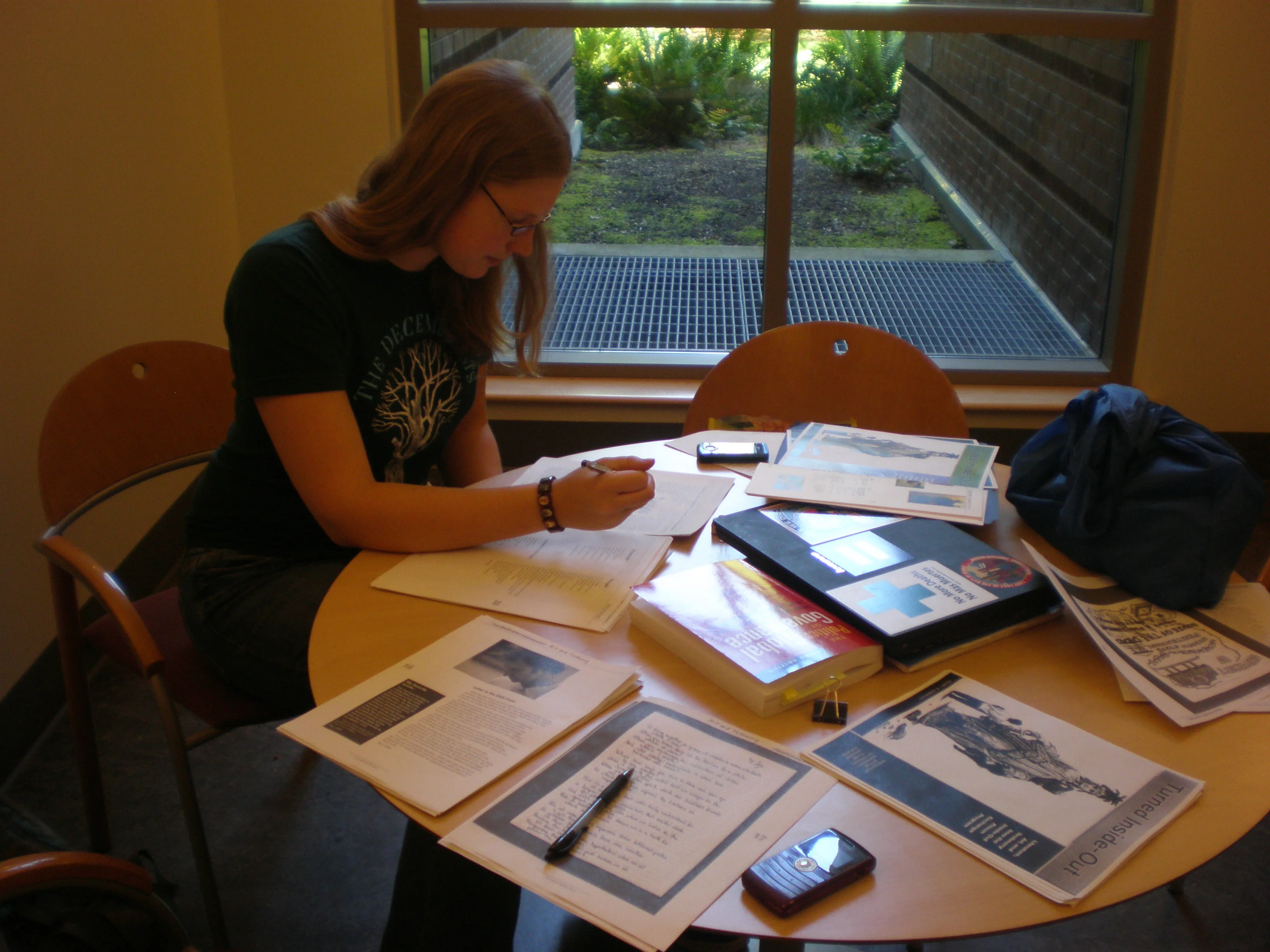When you can't finish the reading
/You can’t do it all. But you can make it seem like you did.
Coursework in college demands an enormous amount of reading. Almost regardless of your major, you will be expected to read and comprehend substantial piles of information, articles, books, essays, reports, research, interviews, and novels. And on and on. There were times when my reading load seemed completely impossible—sometimes hundreds of pages of complicated reading assigned per class, per week.
You can’t do it all. In fact, doing it all isn’t the point.
Or at least, almost no one can do it all 100% the time. Maybe you’re the exception to the rule. But generally speaking, no one gets it all done. There is simply too much.
Piles of reading, notes, and tea 2012.
So you have to prioritize. Prioritize which classes matter the most and prepare more for them. For me, this process had to do with what I found most interesting and which professors I liked the best. For classes I liked less, I was careful to maintain the grade I wanted, but didn’t go above and beyond. I’m not claiming this is the best possible system, but it’s the one I chose. In a more perfect or efficient system, you should probably prioritize core classes, plus seminar-type courses where the professor is more likely to know your name and serve as a future reference. And not liking a class is no reason to slack off completely. Much as it may feel different at the time, your lack of effort won’t hurt anyone but you. Prioritizing well means that you do well enough in all your classes, and you excel in the ones that matter/the ones you really care about.
You don’t get credit for having read; you get credit for knowing the material.
Going into college you know you can’t get all the reading done, particularly in reading-heavy majors. So you need to find a way to do enough that you can understand all the material and participate in class discussions, even without having done all the material.
Here’s how I did it:
- Look at the syllabus.
- Identify a “doable” section for in-depth reading.
- Skim the remaining sections
- Intensely read and take notes on the selected section
- If you have time, go back and re-skim the skimmed section
If you do this, you will be prepared to talk about the material, even without having done it all.
In most cases, the readings build on each other. By strategically selecting readings and by over-preparing for one part of the assignment, you can comment intelligently on the subject matter as a whole. When you skim the rest the first time, you get the context. By taking notes, you can add real depth and specificity to your class discussions, while also preparing for the final essay or exam.
If you do this, you are actually doing the work well.
1. Look at the syllabus
Seriously. Read the syllabus. This is a cheat-sheet for the course. The professor has actively written down what to study, what questions to answer, and how to focus for preparation each day.
Make a note of what the syllabus says for you to focus on. Have the questions and topics in mind as you go into the reading. This will help you understand the context and goals of the reading (rather than simply reading mindlessly because that particular 150 pages was assigned); it will help you be prepared for a class discussion; and it will mean you can read the material the first time with the final essay/exam in mind.
2. Identify a “doable” section for in-depth reading
The syllabus will probably indicate what readings are most essential. If you can’t tell from the syllabus, then by looking through the texts for the most advanced or most interesting part of the reading will probably serve you well.
TIPS:
- If part of the assignment is in a formal textbook, this isn’t the section you should pick for close reading. It's an overview: perfect for skimming.
- You shouldn’t pick the shortest, unless it is clearly a key document. This system only works if you’re getting good and thorough information from the in-depth reading
- Be reasonable. Pick something that’s actually doable. If you decide 214 of 275 pages are the “most important” than you’re not prioritizing. If you can read it all, good luck! But if not, you need to really focus.
3. Skim the rest
Use whatever process works best for you to skim and highlight all remaining readings. Scan through for headings, bold text, and section conclusions. Write notes in the margins or on a separate piece of paper. Take down page numbers that address questions in the syllabus. Circle key quotes. Highlight summaries in introductions and conclusions.
When you finish skimming each section of the reading (this might be a chapter of a text book, an academic article, an essay, a poem, whatever), check that you actually caught the gist of what you read. See if you can write down the main point, or three key ideas. Write it down on the first page of the reading, or at the bottom of your notes. Then when the professor calls on you, you’re ready with a semi-intelligent comment at the least. Or if you want to make a comparison later (in class or in an exam) you have the summaries there to link main points from different articles. Do that final bit of work now to cement what you’ve just skimmed. You’ve saved an enormous amount of time by not doing the in-depth read you were assigned. Do the bit of extra to make up for that.
4. In-depth reading of your selected section
Really, really read the priority section you’ve chosen for yourself. Take good notes. Depending on the text, I use highlighters or underline text, plus putting check marks in the margins beside key ideas. Keep a separate page of notes with the actual page numbers of key ideas. Refer back to the syllabus to make sure you understand the key points raised.
Read this section like you’ve been asked to give a presentation on it. Prepare good questions, and give yourself time for ideas to sink in. Think about what it reminds you of from previous class discussions or other assigned reading. Or other classes, even.
If you really know one text, you can build a whole day’s discussion on that knowledge.
5. Re-skim
This is a bonus step. It’s the above-and-beyond you can do in the ten minutes before class while you’re eating a bagel. Go back over everything you skimmed and just make sure you have in your mind which author goes with which idea. If some big “ah-ha” moment arrived while doing your in-depth reading, check to see if a similar keyword or idea shows up in the other readings. Add a couple of notes, page numbers, questions, or key themes.
If you really go for broke on this method, you will essentially have gathered all the information in the reading while only having read a small portion. You will have done the assignment, and done it well. You are ready to be a full class participant or to dive into an essay. You can build an informed opinion.
In a perfect world, you do all the reading. But you also busy yourself with campus life, friendships, random interests, your off-campus commitments, etc. You live a full life. This class preparation method will allow you to prepare to get the most out of a class without having to sacrifice all of your time to homework. It will free you to really learn the content without becoming buried under the course load. It will make college better.
Happy studies!
How do you tackle your coursework? What percentage of assignments do you actively read? Any strategies to add? Please share them here!





















